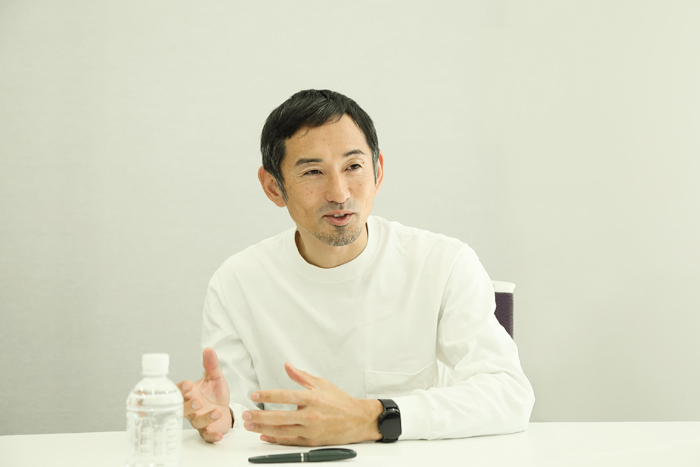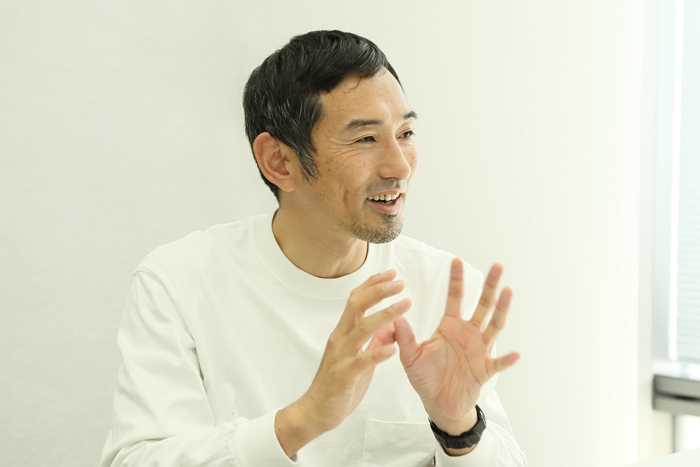A serial interview column where Mr. Dai Tamesue freely discusses "things on his mind right now." The only set theme is "What is autonomy? What is tolerance?" Mr. Tamesue shares his thoughts on various "things on his mind" in response to the mysterious "interviewer's" unexpected prompts. Well then. What kind of stories will emerge this time...? Stay tuned.
──Starting this time, I'd like to ask you about a new theme.
Tamesue: I'm looking forward to it. Thank you.
──As usual, I've come up with a rather unconventional theme. It's about "What exactly are numbers?" I imagine the meaning and importance of "numbers" vary by sport, of course. Especially for track and field athletes, where victory hinges on shaving off fractions of a second or jumping even one centimeter higher, the obsession with "numbers" must be immense.
Tamesue: That's certainly true. You could say that more than half of a track athlete's value is determined by "numbers." And aside from events like relays, most are individual competitions. They battle numbers in utter solitude.
──That makes it especially harsh, doesn't it? Unlike team sports, they aren't evaluated for things like "disrupting the opponent's formation" or "being a mood maker."
Tametsu: It is harsh, but there's also this interesting story. You know about false starts, right? When you start before the pistol fires. Actually, anything up to 0.1 seconds after the pistol fires is still considered a false start.
──I didn't know that.
Tamesue: The reason is that the human reaction time limit to sound is around 0.13 to 0.2 seconds. No matter how exceptional an athlete is, they can't beat 0.1 seconds.
──I see. It's impossible to start within 0.1 seconds of the pistol firing. So, you started based on a hunch that the pistol was about to fire, right? That's the idea.

Tametsu: The interesting part is, even reacting at around 0.12 seconds wouldn't be possible. Yet, it's set at exactly 0.1 seconds. Probably because it's a nice round number. Essentially, the setting itself is ambiguous despite appearing strict. Moreover, that 0.1-second timing is determined by pressure sensors embedded in the starting blocks. But the judgment of whether there's insufficient pressure—essentially, whether the body twitched—is done visually. There's no clear numerical standard defining what constitutes a twitch: is it 1 millimeter? 5 millimeters?
──I always thought they were using incredible high-tech equipment to determine precise numbers.
Tamura: You see, you can't represent everything with numbers or manage everything by numbers. So, while some parts are judged numerically, ambiguous elements that rely on the referee's impression are intentionally left in.
──That's how sumo judging works too, right? Even with video review, not everything can be quantified. That's why you get calls like "Both bodies were considered equal, so it's a rematch." It's essentially saying, "We'll call this one a draw." Isn't that exactly the kind of "flexible pacing" that's the theme of this series?
Tamura: Maybe so (laughs). (Continued in #31)
(Interviewer: Web Dentsu Inc. Editorial Department)
From Hibi, Athlete Brains Production Team
This issue's theme is "numbers." In sports, they're the criteria that decide the outcome—fair in a way, yet also possessing a cruel aspect. Mr. Tamesue brought up the topic of false starts. If you move within 0.1 seconds, it's a false start. Given that the human physical limit, according to scientific understanding, is 0.13 seconds, the 0.03-second margin seems like a buffer. Could this be preparing for the possibility that athletes might one day surpass what we currently consider human or scientific limits? Viewed this way, top athletes are extraordinary individuals who continuously redefine humanity's standards.
Athlete Brains Production Team Dentsu Inc. / Akimichi Hibi (3CRP) · Genta Arahori (Late Bureau)
"Athlete Brains," centered around Dai Tamesue.
For details on this team that leverages athletes' cultivated knowledge to solve societal (corporate/social) challenges, click here.











